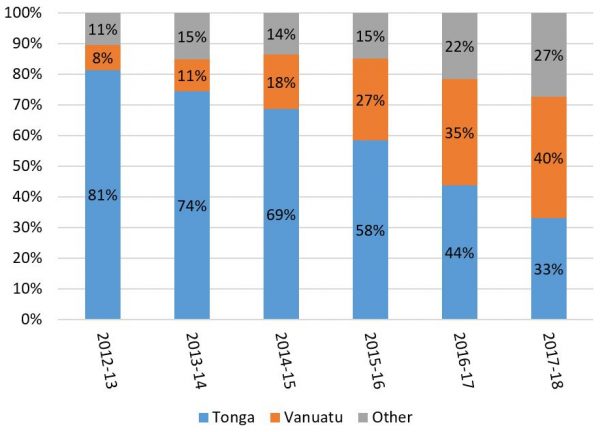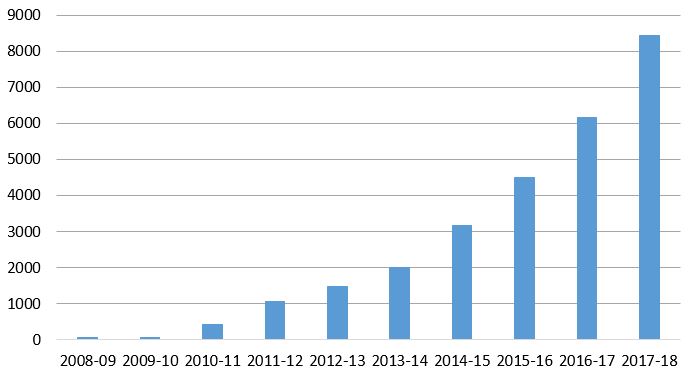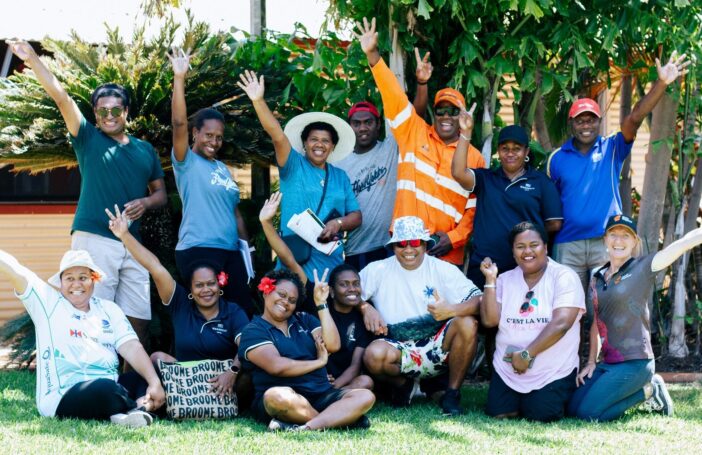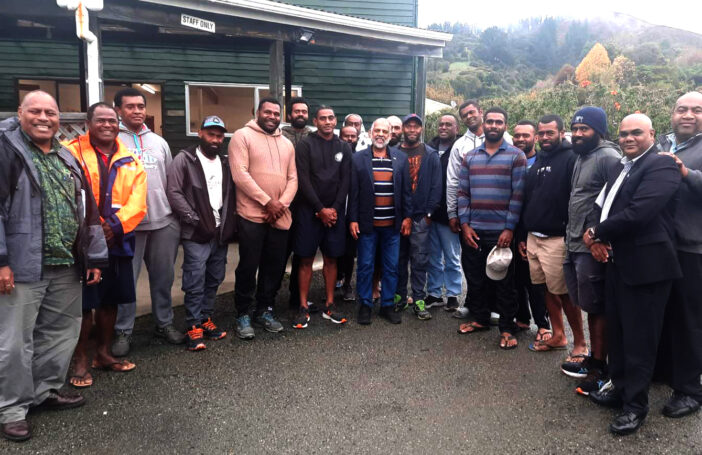8,457 visas were issued under the Seasonal Worker Programme (SWP) between July 2017 and June 2018, an increase of 37% on the previous year. That’s not the biggest relative increase, but it is the biggest absolute increase: 2,291. That increase is bigger than the size of the scheme itself in 2013-14.
SWP visas by year

In terms of sending countries, the big winner in 2017-18 was Vanuatu, which surged past Tonga to become the leading sending country under the SWP, with a market share of 40%. Tonga (with 2,790 workers, only 100 up on the previous year) and Vanuatu (with 3, 350 workers, up 1,200 on the previous year) now between them send 73% of the SWP workforce, slightly down from Tonga’s own share in 2012 of 81%.
SWP country shares
 No other country sends workers in the thousands, but Timor-Leste – whose numbers almost doubled – is getting close, with 914 visas in 2017-18. Samoa is in fourth place followed by Kiribati, Fiji, Solomon Islands and PNG.
No other country sends workers in the thousands, but Timor-Leste – whose numbers almost doubled – is getting close, with 914 visas in 2017-18. Samoa is in fourth place followed by Kiribati, Fiji, Solomon Islands and PNG.
SWP visas by the smaller sending countries

At the current rate of growth, one would expect the Australian SWP to exceed New Zealand’s equivalent, the Recognised Seasonal Employer Scheme (RSE), by next year, as the latter is capped at 11,100. There it still a long way to catch up with the number of backpackers working on Australian farms (estimated at about 40,000) but the SWP trajectory is certainly positive, and the growth rate much faster than I expected.
The capacity of the SWP to expand so rapidly would, one think, put paid to the calls for a new “agricultural visa”, since clearly we already have one, or two in fact, with the SWP able to meet seasonal agricultural needs, and the new Pacific Labour Scheme able to meet non-seasonal agricultural needs.
In Tonga, the number of workers participating in both the Australian SWP and the NZ RSE has reached an impressive 13% of the eligible sending population (those aged 20-45). If every participating country sent that proportion of workers, there would be over 500,000 workers under the two schemes, a number way in excess of current demand. And there is no reason to think that 13% is the saturation point: there are still entire villages in Tonga that are not participating in the scheme.
The share of women in the SWP remains stubbornly fixed at 14%. One bright spot on the gender front is the rise of Timor-Leste, whose share of female workers – at 32% – is twice that of the next highest. If Timor-Leste numbers continue to grow rapidly, it will be good both for the SWP as a whole, and specifically for gender equity.
The data on which this analysis and graphs are based can be found here.





This is an interesting analysis of the past year’s SWP figures, Stephen. One caution though — your comment about Tonga’s participation in the SWP and RSE reaching “an impressive 13% of the eligible sending population (20-45 years)” needs some qualification.
Robert Ingram and I have shown in research completed for LMAP that the “eligible sending population” needs to be defined much more precisely than just the total in a particular age group in the sending country. Given that recruitment for both the RSE and SWP is strongly biased towards younger adult men it is much better to express the share of the “eligible sending population” in terms of males aged 20-39 years.
The Australian Department of Home Affairs (ADHA) does not publish data on SWP participants by age, but Immigration New Zealand (INZ) has made such data available up until quite recently for RSE workers in broad age groups. If we assume the SWP workers heading for Australia from Tonga are from the same basic demographic groups as those heading for work under the RSE scheme, and there is no reason to assume they would be very different given they are doing similar types of seasonal work, then we can establish a little more precisely just what the the impact of seasonal work in the two schemes is having on the main age group affected.
Data from the ADHA and INZ show that in the 2016/17 financial year 89 percent of the Tongans participating in the SWP and the RSE were males (4,025 out of 4,512 who were employed in the two schemes). If we assume the 2,394 Tongan male SWP workers had the same age distribution as the 1,621 Tongan male RSE workers then 3,276 of the 4,025 males would have been aged 20-39 years — 81.4 percent.
When we put these 3,276 males aged 20-39 years alongside the 13,000 Tongan males aged 20-39 years at the time of Tonga’s census in 2016 we find that the equivalent of 25.2 percent were absent in seasonal work in Australia and New Zealand during that year.
I would suggest that having around a quarter of all males aged 20-39 years absent from a country in seasonal work is reaching some sort of level that requires a more considered impact analysis. If we took Australia’s equivalent male population in 2016 (3,232,461 aged 20-39) and removed a quarter of it for six or more months each year, there would be over 800,000 younger working age makes overseas — bigger than the entire Queensland male population in that age group and almost as big as the equivalent population in Victoria.
In New Zealand, the estimated male population aged 20-39 years in June 2016 was 630,640, and 25 percent of this — 157,660 – is almost double the number of New Zealand-born males aged 20-39 years who were living in Australia in 2016 (82,464).
These shares are not trivial and I would suggest that when we are analysing the impact of seasonal migration on source country populations we need to make sure we are using appropriate demographic denominators. Tonga is exceptional in terms of its level of participation in the SWP and the RSE, but Vanuatu is beginning to feature significantly in terms of shares of its males aged 20-39 overseas as seasonal workers in Australia and New Zealand (just under 10 percent in 2016/17). Most of the other countries have very small shares of their eligible populations involved in the schemes.
Let’s not generalise too much when it comes to acceptable saturation points — people of both sexes aged 20-39 years are the mainstay of the younger workforces in the domestic economies. They are also the people who are engaged in international education and other forms of migration. And, of course, they are the primary group that is carrying the burden of reproduction of the populations in the islands.
There needs to be a much closer examination of the impact on the sending country’s society and economy of having the equivalent of 25 percent of young adult men absent every year in seasonal work. Hopefully this is research that will get some priority in the recently launched Pacific Labour Scheme.